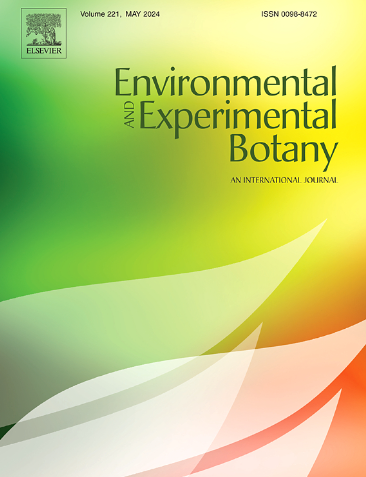Investigating the impact of spring (Vrn-A1) and winter (vrn-A1) vernalization alleles on frost tolerance induced by light spectrum and low temperatures in different wheat backgrounds
IF 4.5
2区 生物学
Q2 ENVIRONMENTAL SCIENCES
引用次数: 0
Abstract
The need for exposure to low, but non-freezing temperatures is a common aspect of both cold acclimation and vernalization, suggesting a possible link between these two processes. Cold hardiness levels are regulated by the C-repeat binding factor (CBF) regulon, whereas vernalization requirements are influenced by vernalization genes (VRNs). The VRN1 gene has an epistatic effect on the CBF regulon, reducing frost tolerance during post-vernalization. It is widely acknowledged that, apart from low temperature, light also serves as an external signal influencing the expression of CBF genes indicating that photoperiod and light quality play important roles in regulating cold acclimation processes. For instance, frost-tolerant winter wheat illuminated by white light with additional far-red light increases frost resistance due to low red:far-red (R:FR) ratio. However, information regarding the regulation or influence of VRN1 gene on the light quality induced frost tolerance is currently lacking. In the present study, reciprocal near-isogenic lines (NILs) produced from crossing the non-hardy spring-habit (Vrn-A1) cultivar ‘Manitou’ with the very cold-hardy winter-habit (vrn-A1) cultivar ‘Norstar’ were used. Our objective was to investigate how winter/spring VRN1 alleles (vrn-A1/Vrn-A1), inserted in the same genetic background, affect wheat frost tolerance under different spectral illuminations at temperatures of 15 °C and 5 °C. Based on freezing tests and the cold-related gene expressions patterns, it appears that the light-induced frost tolerance does not completely depend on VRN1 gene expression but is strongly dependent on the background. Additionally, the presence of the spring allele is capable of sensitizing an otherwise frost-tolerant genotype to frost.
研究不同小麦背景下春化等位基因(Vrn-A1)和冬化等位基因(Vrn-A1)对光谱和低温诱导的抗冻性的影响
暴露在低但不冻结的温度下的需要是冷驯化和春化的一个共同方面,这表明这两个过程之间可能存在联系。抗寒性水平受c -重复结合因子(CBF)调控,而春化需求受春化基因(vrn)影响。VRN1基因在CBF调控中具有上位性作用,降低了春化后的抗冻性。人们普遍认为,除了低温外,光也是影响CBF基因表达的外部信号,这表明光周期和光质量在调节冷驯化过程中起着重要作用。例如,抗冻冬小麦在白光照射下加上额外的远红光照射,由于低红远红光比(R:FR)增加了抗冻性。然而,关于VRN1基因对光质诱导抗冻性的调控或影响的信息目前尚缺乏。在本研究中,利用非耐寒春季习性(Vrn-A1)品种“马尼托”与极耐寒冬季习性(Vrn-A1)品种“诺斯达”杂交产生的互易近等基因系(NILs)。我们的目的是研究在相同遗传背景下插入的冬季/春季VRN1等位基因(vrn-A1/ vrn-A1)在15°C和5°C温度下不同光谱光照下对小麦抗冻性的影响。根据冷冻试验和与冷相关的基因表达模式,似乎光诱导抗冻性并不完全取决于VRN1基因的表达,而强烈依赖于背景。此外,春季等位基因的存在能够使原本耐霜的基因型对霜敏感。
本文章由计算机程序翻译,如有差异,请以英文原文为准。
求助全文
约1分钟内获得全文
求助全文
来源期刊

Environmental and Experimental Botany
环境科学-环境科学
CiteScore
9.30
自引率
5.30%
发文量
342
审稿时长
26 days
期刊介绍:
Environmental and Experimental Botany (EEB) publishes research papers on the physical, chemical, biological, molecular mechanisms and processes involved in the responses of plants to their environment.
In addition to research papers, the journal includes review articles. Submission is in agreement with the Editors-in-Chief.
The Journal also publishes special issues which are built by invited guest editors and are related to the main themes of EEB.
The areas covered by the Journal include:
(1) Responses of plants to heavy metals and pollutants
(2) Plant/water interactions (salinity, drought, flooding)
(3) Responses of plants to radiations ranging from UV-B to infrared
(4) Plant/atmosphere relations (ozone, CO2 , temperature)
(5) Global change impacts on plant ecophysiology
(6) Biotic interactions involving environmental factors.
 求助内容:
求助内容: 应助结果提醒方式:
应助结果提醒方式:


